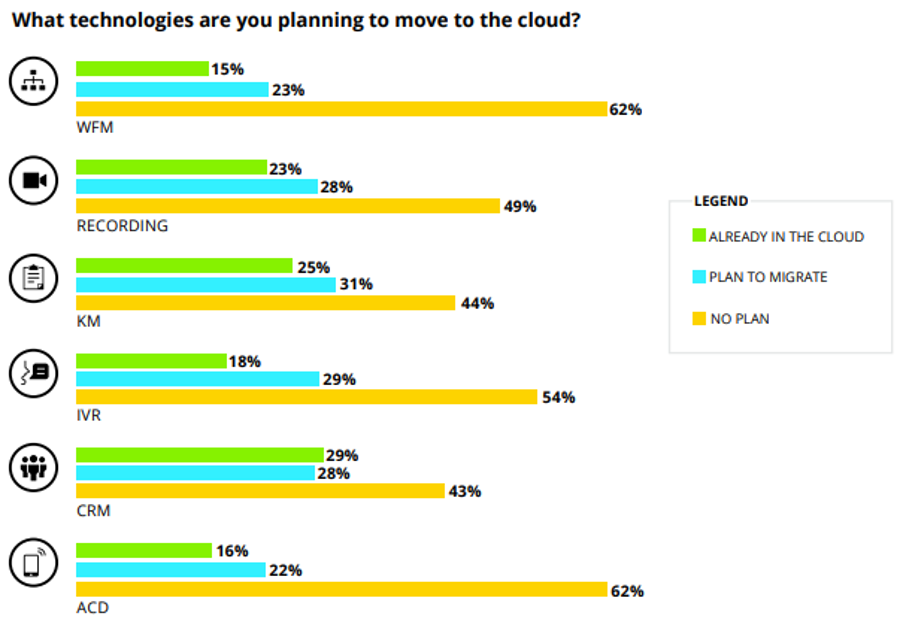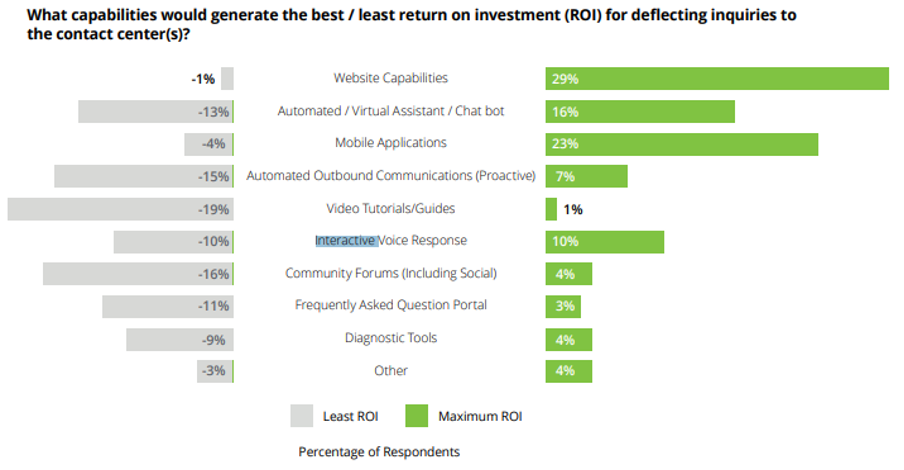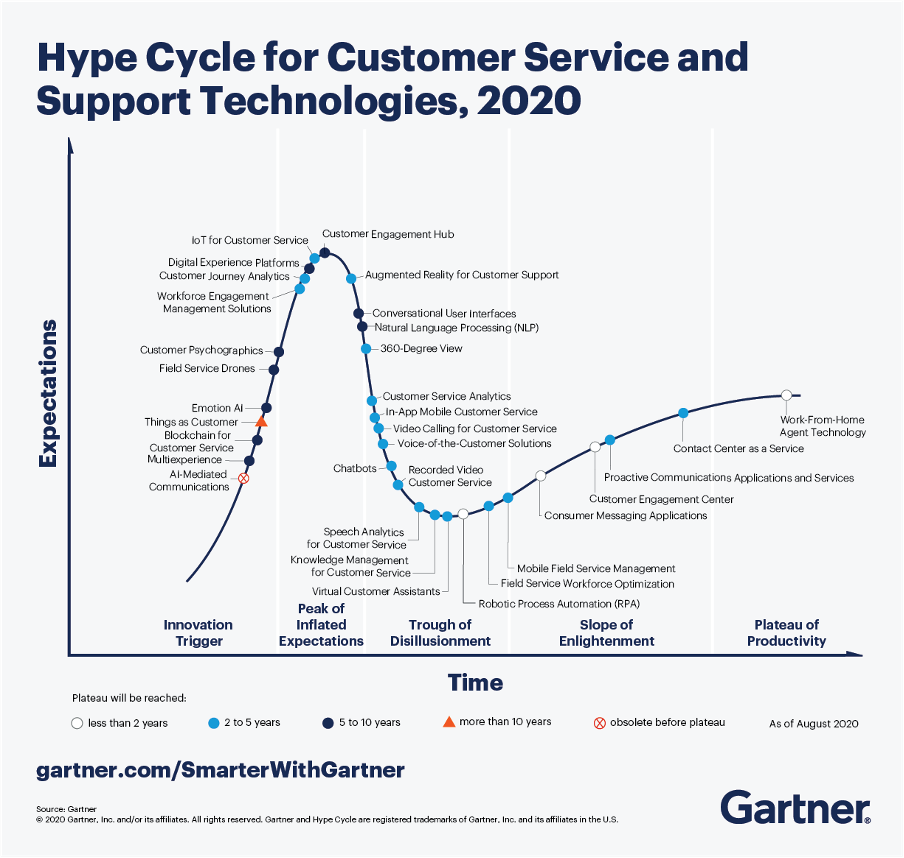CCaaS Trends: The Evolution of Cloud Contact Centres

Last updated on March 1, 2024
Did you know that American businesses risk losing a whopping $494 billion in revenue from poor customer care?
In the age of smartphones, where support is only a click away, consumers have massive expectations when it comes to customer service. In fact, it’s such a huge deal for customers today that it has overtaken price and product as the key brand differentiator.
While the proliferation of handheld devices has a lot to do with the inflated expectations of customers, it is also natural. In the past, contact centers could stay ahead of the curve as long as they ensured to utilize the right solutions and tools to service customers. However, as these contact centers that ran on legacy solutions and on-premise systems grow obsolete while the world hurtles to a cloud-hosted future expedited by the pandemic, the world has been witness to a new phenomenon called contact-center-as-a-service (CCaaS).
According to a survey, CCaaS will grow to be the favored adoption model by 50% of contact centers by 2022. Moreover, the sector has been forecast to surpass a gross addressable market of $50 billion by 2025. Furthermore, Gartner has stated that CCaaS solutions will function similarly to on-premise contact centers, with a few notable differences.
While these solutions will have the same ambition, CCaaS will focus on managing customer interactions intelligently by connecting to cloud-based applications that are chargeable on a monthly basis. It further predicts that CCaaS solutions will comprise the following features:
- Universal call queuing and call routing
- Intelligent virtual assistants to service customer queries
- Secure storage and access of customer data
- Interactive voice response (IVR) and automatic call distribution (ACD)
What’s more, the emergence of artificial intelligence (AI) and machine learning (ML) and their subsequent penetration into business processes is considered to impact CCaaS greatly. Here, we will look at the trends that look set to shape the future of CCaaS in the coming years.
1. Artificial Intelligence
Ever since 2016, the continuous advancements in technology have culminated in a disruption of contact centers on an industrial scale. This meteoric pace of innovation birthed new and innovative solutions for modern contact centers, finally coming to a crescendo with the advent of artificial intelligence (AI).
AI has made it possible for human capabilities to be undertaken by software inexpensively and at scale. Its impact has been so massive that 55% of organizations have begun investing in it, according to Gartner research.
What’s more, the pandemic hasn’t been shown to halt or even inconvenience the development of AI, with 30% of businesses planning to invest more in it.
The denouement of Gartner’s latest Hype Cycle for AI shows how AI-powered contact center technologies such as natural language processing (NLP), chatbots, and machine learning (ML) have recently begun to lose their magnetism, ending up in the Trough of Disillusionment. However, experts predict that they will develop into the Plateau of Productivity within 2-5 years, making the following use cases more functional:
- Smart call routing: AI will be able to determine services that best fit the client’s profile according to their communication history and accordingly route their call to an agent
- Multichannel support: AI-powered support systems will become complex enough to direct customers to other channels when their issues can’t be solved using traditional approaches
2. Advanced Self-Service Tools
According to studies, consumers are increasingly becoming self-reliant, preferring to use self-service channels such as live chat (42%) and chatbots (86%) rather than contacting customer support.
These developments are in keeping with Gartner’s Hype Cycle for Customer Service and Support Technologies, which identified five solutions that would take customer experience in the future. These include customer service analytics, engagement hubs, the voice of the customer, virtual agents (live chat), and chatbots.
These pieces of evidence just go to show how customers’ deep penchant for convenience has led to the evolution of the aforementioned self-service solutions, which are all expected to mature in 2-5 years. Of these technologies, chatbots are the most ubiquitous and propitious and are already being used to service routine queries, automate menial tasks, and route sophisticated support tasks to human agents via live chat.
Live chat software is among the leading contact methods for online customers, with 46% of them preferring it over social media and email. This recent increase in its favor has much to do with consumers’ fondness of soliciting personalized support. Courtesy of it, they can now chat directly with human agents instead of calling or emailing them. Because these customers are only redirected to live chat when the chatbot hasn’t been able to service their issues satisfactorily, chat queues are negligibly short.
What’s more, these tools have also proven to improve the support team’s efficiency. So it’s no surprise CX leaders will continue to increase their investments in it this year.
3. Migration to the Cloud
Buoyed by the COVID-19 outbreak, cloud migration dramatically increased during the steepest economic contraction since the 2008 financial crisis. So much so that a survey of 50 CIOs found that respondents expected their on-premise workload to drop by 41% this year.
Cloud computing’s growth since then has been a megatrend, with 68% of respondents from the above survey claiming “migrating to the public cloud and/or expanding private cloud” as the biggest driver of IT expenditure. The technology’s growth in the current year has been coming for some time now and is expected to influence contact centers massively.
Today, organizations are implementing cloud contact centers that let remote agents engage consumers in the same way as they did in physical centers. Migration to the cloud will enable these businesses and others to access the requisite software to provide customer service via the internet as a service. This will allow your support staff to access the contact center system from any location and at any time to connect with customers.

As cloud migration advances, businesses will slowly start shifting to it because of its aforementioned benefits. According to a Deloitte survey, 55% of business executives are of the unanimous opinion that moving certain parts of their contact center capabilities to the cloud is a “sound technology strategy”. Furthermore, 57% of companies have already migrated or are planning to migrate their customer relationship management (CRM) capabilities to the cloud.
However, despite its obvious advantages, as many as 60% of companies are cynical when it comes to the cloud, citing it as an unstable solution as it can render contact centers inaccessible in the event of a failure. However, experts believe that these opinions will be quashed, and the dynamic between these organizations and their legacy solutions will be uprooted as soon as omnichannel communications become the norm, essentially becoming central to the contact center model.
For people that are still unsure about breaking away from legacy solutions, mentioned below are a few benefits that migrating to the cloud will hold for contact centers.
- Functionality: Emerging cloud solutions come with APIs that let you sync your data with business systems like KM, CRM, and ERP, among others, while effectively enabling you to conduct outbound campaigns, manage users, gain detailed stats, etc.
- Reduced costs: Maintaining and running legacy, on-premise infrastructure is very expensive. Cloud computing, in turn, presents a simpler solution where you just have to pay a monthly subscription for the services that you desire.
- Flexibility: Cloud computing allows you to work remotely by moving your entire workload from its on-premise location to the cloud.
- Data security: Storing important data on the cloud is extremely safe and does away with dangers usually associated with the on-premise location of data, such as data theft, damage to the data center, etc.
4. Interactive Voice Response
The Interactive Voice Response (IVR) feature in contact centers is bound to see an uprise in adoption owing to its facility of allowing callers to choose the type of service they want. Additionally, utilizing voice-enabled support enhances the human experience by providing a personal touch. An IVR can be used to capitalize on this sentiment by asking callers relevant queries based on historical customer data.

IVR(s) are among the most powerful channels for generating the best ROI for deflecting inquiries to contact centers. Moreover, it can be coupled with the Automatic Call Distributor (ACD) feature to supply the customer’s information to the support agent, thus invariably improving the customer experience by providing a relevant experience and shortening the call duration for the customer.
What’s more, as AI and machine learning capabilities develop further, call processing solutions like IVR will be able to harness their capabilities to make decisions and take steps on the basis of the knowledge learned about the customer from previous meetings with them. For instance, the software will be able to determine the language that the caller prefers and ascertain the right agent to route the caller to, thus fostering an environment for a more natural interaction for customers.
5. Omnichannel Communication
While omnichannel communication has been around for a while, it only caught on in the decade gone by, thanks to a proliferation of handheld devices.
The soaring expectations of consumers today and the number of channels they could solicit customer service from led to an indelible striving among them for freedom of communication with brands. This further caused brands to capitalize on channels such as social media, SMS, text, etc., to provide a consistent and personalized experience to them and reach them where they are.
Courtesy of it, as many as 90% of companies have hopped on the omnichannel bandwagon in hopes of providing a uniform experience across channels. They are doing this by reevaluating omnichannel experience through change management activities, advanced journey mapping, and the application of analytics.
Omnichannel also allows organizations to better understand their customers, thus prompting a greater investment in it on their part. According to Invesp, omnichannel customer engagement strategies also enable companies to retain 89% of their consumers, making it evident to see why omnichannel will rise in the coming year.
Conclusion
CCaaS is where the future of contact centers is at, and it is a plausible solution that all organizations with contact centers need to get on board with sooner rather than later. As businesses slowly migrate to the cloud, it will become easier for them to deploy the tantalizing solutions of CCaaS and capitalize on them for improved business continuity and enhanced customer experience.

